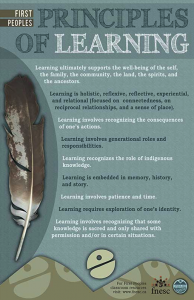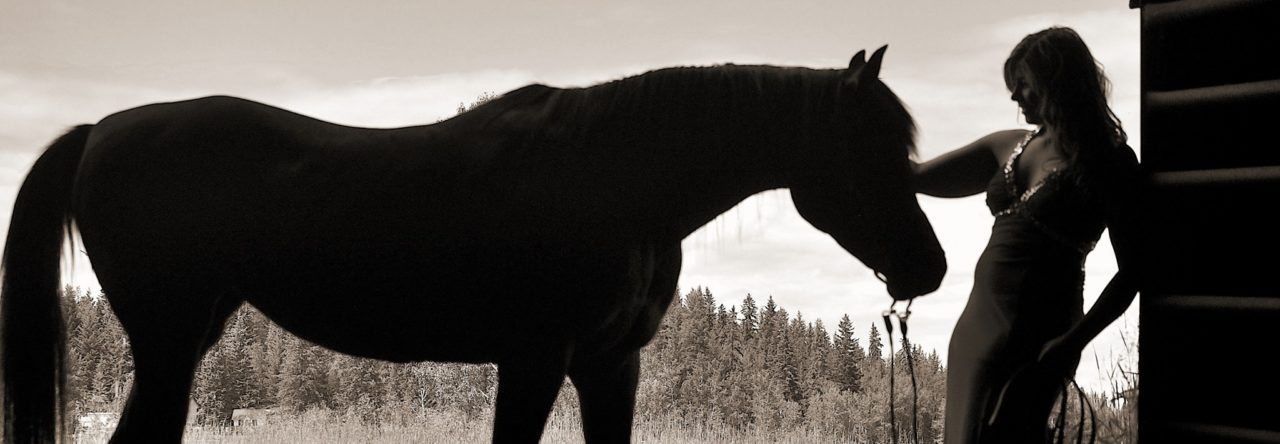I taught First Peoples History 12 this Practicum, and it did not go as expected:
When I first entered the practicum, I was excited to take my students outside and engage with community members and learn about culture. What a rude awakening I had. I fought clashing COVID protocols from the school district and the province which stopped us from a few of our field trips. When I wanted to bring culture into the class, our community the last several weeks has suffered so many losses. The reserves have shut down due to COVID numbers, and our elders are in grieving from so many deaths. Needless to say, it was not the time to ask for a learning opportunity.
Here is how I focused my teachings around the First Peoples Principles of Learning within my First Peoples History 12 Class:
“Learning Ultimately supports the well-being of the self, the family, the community, the land, the spirits and the ancestors.”
So much of our culture is beautiful, but our history is like the rainbow you’re constantly looking for after the storm, but you’re only met with more storm. When we were learning about culture and the establishment of an already thriving economy prior to colonization, we were learning about a story that almost seems like a fairytale. As we progressed with our history through colonization, trading, depleting of resources, gold rushes, small pox, wars, oppression and assimilation… the course content became overwhelmingly heavy. It was important that I made room for my students to have a safe space to take breaks. We would make prayer ties, learn about indigenous plants and their medicinal uses or go outside and learn physical activities taught to many children in nations to build strength and skill for hunting. One day, we had to take a full break and play a game of ‘heads up- 7 up’ requested by the class… because everyone needs a little fun in their life. Sometimes I would have students ask “why are we doing this again?” and I would point back to the medicine wheel. I would explain that it is important to take care of ourselves, our hearts, our mind, our bodies and our spirit, and to not empty too much from our cup when learning about the content of this course. Although the content is extremely important, and the richness of our conversations are so educationally and culturally wonderful… it is important to ultimately support the well-being of ourselves before we can support our friends, family, community, land, spirits and ancestors.
Learning is holistic, reflexive, reflective, experiential and relational (focused on connectedness, on reciprocal relationships, and a sense of place).
Day one when I read Thomas King’s “Inconvenient Indian” when I asked them to reflect on what we read, show what you know, how do you feel, what thoughts are provoked etc… students were completely caught off guard. I was met with responses such as
“We’ve never been asked “how we feel” before in an assignment you actually want to know our thoughts?”
Our first attempt at reflections, I was handed in bullet point notes on what we read; a summary if you will. Throughout my time with my students, we learned how to incorporate our thoughts and connect them to our learnings. Students reflections by the last week were a beautiful demonstration of learning, in a non-invasive format, where students are able to show their take-aways without being confined to a specific question. By being reflexive & reflective, students are able to be more present in their past, present and future learnings.
Learning involves recognizing the consequences
of one’s actions.
A wonderful and hard lesson to learn all at once is discovering that learning involves recognizing the consequences of one’s actions.
Student feedback says “absences have consequences” or “missing assignment have consequences.” I found it interesting that students relate their academics and learning with negative consequences. Obviously once their front lobe kicks in, they are able to make the connection between missing class and having a lack of understanding in the academic area. Students are also able to recognize that a pile up of missing assignments due to a lack of time management becomes an accountability issue. With this said, I try to make sure students receive positive consequences with positive learning actions, such as exemplary work and finishing assignments early are met with negotiable rewards. For example, I have a student who uses her time very wisely, is always on task, does exceptional work and finishes early. Once she completes her work, she asks if she can work in the library on her career, and always checks in again at the end of class. This student has realized that when she does quality work, followed with amazing time management skills, that she can negotiate for her learning.
These are just a few examples of the holistic teaching approach.
Learning involves generational roles and
responsibilities.
We learn about the generational loss of the Indian Act and the oppression of First Peoples (particularly in B.C.) We have learned about generational trauma and the responsibilities that are that of the Elders to teach and pass on information, was horrifically disrupted when the land was colonized and small pox wiped out over 90% of our people. At this point, First Nations were reliant on the trading with Europeans, and due to the lack of population, they voted their Elders to be the one’s to trade, as a sacrifice so the younger people could continue to gather resources for trade. On top of the Elder sacrifices, a loss of culture continued with the residential schools. Our students are beginning to understand that assimilation dismissed the cultural learnings that our First People would have gathered from those who were stripped of their heritage and thus discontinued oral traditions of sharing and passing of language, traditions and culture, specifically the “roles of indigenous knowledge.” Students are beginning to learn that by understanding the Truth, they can be part of the reconciliation. Students are making change, creating paths forward and starting conversations around them and that “learning is embedded in memory, history and story.”
Holistic learning embeds the First Peoples Principles in a way that they can relate to the subject emotionally, mentally, spiritually and physically. By incorporating all four aspects of the medicine wheel through our First People Principle teachings and allowing students to “explore their identity” through their learning, we can expect that students will embed these principles in order to develop core competencies and become successful in all places of life. We just may have to remind students that “Learning involves patience and time.”
Learning involves recognizing that some
knowledge is sacred and only shared with
permission and/or in certain situations.
Cited Sources:
First Peoples Principles of Learning – Poster – from FNESC
http://www.fnesc.ca/wp/wp-content/uploads/2015/09/PUB-LFP-POSTER-Principles-of-Learning-First-Peoples-poster-11×17.pdf
First Peoples Principles of Learning – Blog – by Jo Chrona from FNESC
https://firstpeoplesprinciplesoflearning.wordpress.com/
Learning First Peoples Classroom Resources – from FNESC
http://www.fnesc.ca/learningfirstpeoples/

